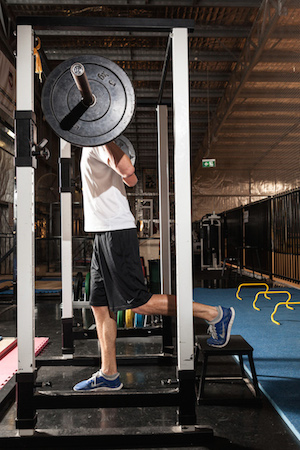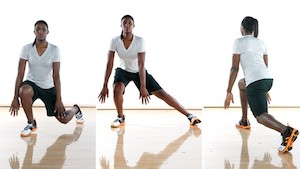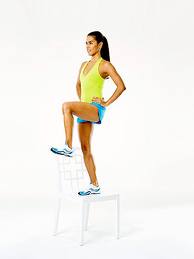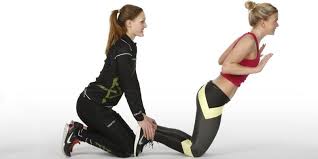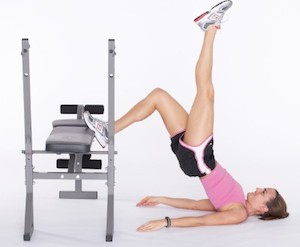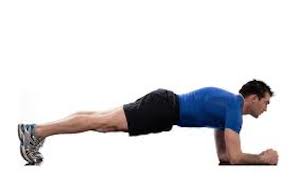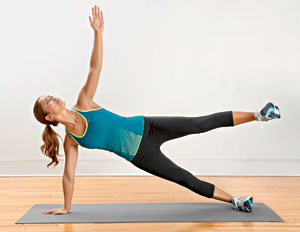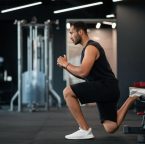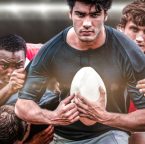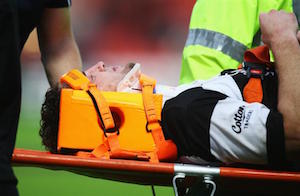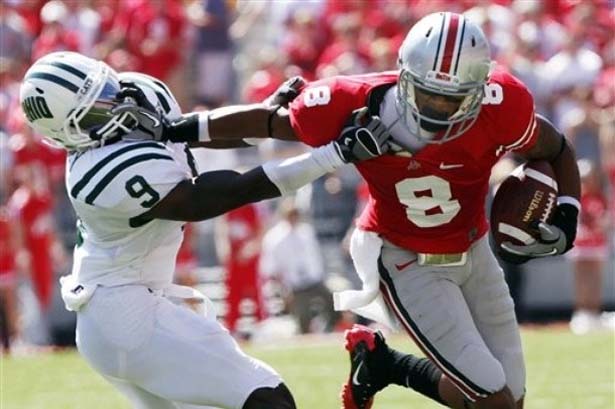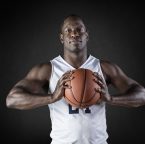A Football specific strength training should improve core strength and stability, helps develop lower limb stability, strength and muscular balance, help reduce the risk of injury and assist in the development of muscular strength, power, speed and agility. All critical elements to the game of Football.
Particular attention should be given to the areas of the body that are most commonly injured among footballers. These areas include ankle injuries, knee injuries, groin injuries and muscular strains such as hamstring injuries.
In addition to strengthening the weak areas and body parts that are most likely to be injured it is imperative that the tight areas are also mobilized through appropriately implemented mobility drills.
The goal is an athlete who is balanced, is able to function and move freely, is less likely to suffer from preventable soft tissue injuries (e.g. hamstring injuries) and is able to apply force to the ground more efficiently resulting in improved speed, power and agility and possess the necessary core strength to hold off defenders in tight areas.
My top 5 strength exercises for Footballers in no particular order include:
EXERCISE 1
The Bulgarian Split Squat
(or Single Leg Split Squat or Back Foot Elevated Split Squat)
Muscles worked: quads, glutes, hamstring, core and stabilizers
Single leg lower body exercises address muscle imbalances that may be present between the left and right sides of the body.
NOTE: always perform the weak side first. If required perform an extra set on the weak side of the body.
Place the top of the back foot flat on a bench and lower that knee down to the ground so that you are in a half-kneeling position.
The front foot should be positioned far enough in front of the body so that the shin is vertical when kneeling on the ground. Additionally, more of the weight should be in the heel of the front leg.
Keep the head up, chest up and look straight ahead during the movement.
NOTE: If the foot is not far enough in front of the body the toes of the front foot will be pushing out the front of the shoe and the front knee will be forward of the front foot placing excess pressure on the knee cap.
Variations:
Easier – bodyweight only with hand on the hips 3 x 8-10 reps per side
Moderate – use light resistance – dumbbells or hold a med ball at the chest height. 3 x 6-8 reps per side
Harder – perform the exercise with a weighted Olympic bar on the shoulders or elevate the front foot. Perform 3 to 4 x 4-6 reps per side
To increase the activation of the stabilizer muscles in the lower leg, position the front foot on a balance disc.
Exercise 2:
4 Way Lunge
Muscles Worked: adductors, abductors, glutes, quads, ankles, core and stabilizers as well as balance and core stability.
This exercise incorporates 4 distinct movements per set:
First movement:
The forward lunge. (12 o’clock) Head up, chest up, eyes looking straight ahead, take a big step directly forward (right foot), and while keeping the torso tight, drop the back knee down to the ground before driving through the front heel to return to the start position.
Second Movement
Side lunge to the right side (3 o’clock position).
As above but take a step out to the side with the right foot
Third Movement
Reverse Lunge (6 o’clock)
As above take a big step back with the right foot and drop the right knee to the ground, drive through the front heel to return to the standing position.
Fourth Movement
Side Lunge to the left (9 o’clock)
As for the second movement but take a step out to the left.
After completing the first set of 4 movements perform the second set in the opposite direction – starting with a forward lunge with the left foot, followed by side lunge left, reverse lunge left and side lunge right.
Perform 2 sets of each rotation.
Variations:
Easy – Bodyweight only
Moderate – hold a light dumbbell or medicine ball
Hard – Increase resistance
To improve ankle stability the lunges can be performed onto a balance disc or Bosu ball
Exercise 3:
Explosive Step-Up with Knee Lift
Muscles worked: quads, glutes, hamstrings, hip flexors, core and stabilizers
To perform a Step-Up with Knee Lift, you’ll need a sturdy platform or bench. Place one foot on the platform, making sure your entire foot is on it for stability. Now, here’s where the fun begins.
Push through the foot that’s on the platform, engaging your quads and glutes to lift your other leg. As you reach the top, bring the trailing knee up towards your chest.
Try to do this motion smoothly; it’ll engage your core and help with balance. Lower the lifted knee back down and step off the platform to return to the starting position. Make sure to do an equal number of reps on both legs to keep things balanced.
Perform 2 to 3 sets of 4-6 repetitions per side 8-12 total reps per set.
Variations:
Easy – Perform bodyweight only
Medium – Add a light resistance such as a dumbbell
Hard – Use an Olympic bar or add resistance bands
This exercise can also become an explosive movement by explosively stepping up and driving into the air before returning to the start position.
Exercise 4:
The Nordic Hamstring Exercise
Muscles worked: hamstring, core and stabilizers
Eccentric hamstring strengthening is a great way to increase the posterior chain and reduce the likelihood of hamstring injuries.
Start by kneeling on a pad with both feet and knees positioned shoulder-width apart.
Position the heels under a pad or have a partner hold the ankles. While maintaining a tall position with your arms by your sides and your eyes looking straight ahead lower your body down as far as you can before using your arms to catch the body and push you back to the starting position.
An alternative to the above is to perform the exercise using a glute/ham bench. The further back your knees are from the top of the pad the easier the movement will be.
The eccentric nature of the Nordic Hamstring movement places intense stress on the muscle fibers of the hamstrings and should be progressed slowly into the program. The result of this will be significantly stronger hamstrings that are less prone to injury.
Perform 1-3 sets of 5-8 repetitions.
Variations:
Easy – only lower down a small way before using the hand to assist with the rest of the lowering movement. Use the hands also to push the body back to the starting position. You can also attach a band around the chest anchored behind the body to lessen the resistance of the upper body during the lowering phase of the movement. You can also raise the knees on the ground by placing them on a thick pad to make the movement easier.
Moderate – lower to body further and use the hamstring to pull back to the starting position.
Hard – hold resistance or perform the movement with arms extended above the head.
Exercise 5:
Single-Leg Glute Bridge on Bench
Muscle worked; glutes, hamstrings, lower back, core and stabilizers
Lie on the floor with the right knee bent at 90 degrees with the foot resting on the bench and the left foot flat on the floor.
The left leg is held off the ground and in line with the torso.
Perform the movement by driving through the heel of the right foot and contract the glutes to raise the hips. At the top of the movement, the knee, hip and shoulder should be in a straight line. The hips are square and the left leg in line with the body.
In a controlled fashion, lower the body back to the starting position.
Perform 2-3 sets of 6-12 repetitions per side.
Variations:
Easy – bodyweight only
Moderate – Perform the exercise across two benches or position the shoulders on a bench and the foot on a Swiss ball
Hard – position a weighted bar across the hips during the movement
In addition to my main 5 exercises for football, I always incorporate core strengthening and stabilization exercises.
In developing the musculature of the core I like to break the core into 3 distinct movements that replicate all the functional movements of the body (anterior, rotational and lateral core as well as glute function)
Anterior Core – Plank
(or Prone Hold or Bridge)
Starting a plank is pretty straightforward. First, get into a push-up position on the floor. However, instead of placing your hands on the ground, rest on your forearms; your elbows should be directly below your shoulders. Extend your legs straight out behind you, toes tucked into the floor.
Now comes the key part: engage your core, glutes, and thighs to maintain a straight line from your head to your heels. No sagging hips or raised butts; think of your body as a rigid board. Hold this position for a set amount of time, focusing on keeping your muscles engaged and your breathing steady. There you go, you’re planking.
Perform 2 to 3 sets of 30-60 second efforts
To progress the exercise raise and arm or leg or the opposite arm and leg at the same time. Alternatively, perform the exercise while balancing on a stability ball.
Rotational Core – Kneeling Chop and Lift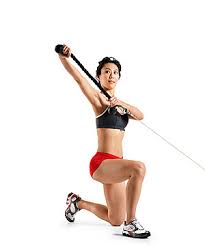
The half-kneeling chop and lift is a great functional exercise that activates core, glutes and upper body pushing and pulling muscles and can be performed from a high to low position or low to high position using a cable machine.
Kneel side on to the cable machine with the front foot on the ground with the knee at 90 degrees. The leg furthest away from the cable machine is kneeling on the ground with the foot behind the body.
Imagine you are balancing the front foot, back knee and back foot along a very thin line. Keep the head up, core tight and focus on contracting the glute of the leg furthest away from the cable machine. You should feel unstable.
With the arms kept straight, body square and looking straight ahead
Pull the cable from either a high or low position directly across the front of the body and push across the opposite side of the body.
Perform 2 to 3 sets of 8-10 repetitions per side
Lateral Core – Side Plank with Leg Lift
Muscle Woekd: external obliques, glutes, hips and lower back.
Lie on the left side of the body and balance on the left foot (with the right foot resting on top) and left elbow – held in line with the shoulder.
Ensure the hips are kept up at all times and in line with the torso.
Keep the upper arm straight above the body, at the same time slowly raising and lowering the right leg (ensure that the foot is point forwards not up to the ceiling).
Perform 2 to 3 sets of 8-10 repetitions per side
This exercise can be performed with the back of the body against a wall to ensure the body is kept straight during the movement.
Final Word
In summary, soccer players need a well-rounded fitness regimen to excel on the field, and the exercises we’ve covered aim to provide that balance. From enhancing cardiovascular endurance to building leg strength and improving agility, these top five exercises are critical for any serious soccer player.
Incorporating them into your training will not only make you a more versatile and resilient athlete but also give you the edge you need to outperform your competition. So lace up those cleats and hit the gym—your future in soccer could depend on it.
Professional Soccer Trainer, from Pro Training Programs
Website: www.
Facebook: www.facebook.com/
Twitter: @ProTrainingProg


